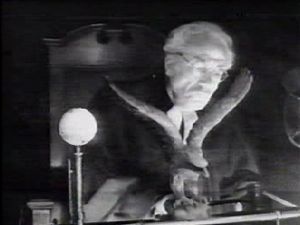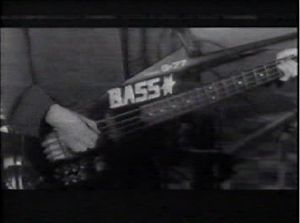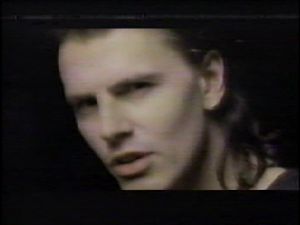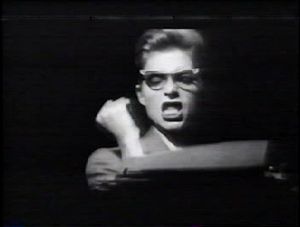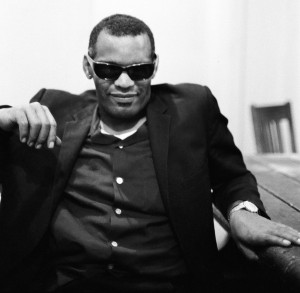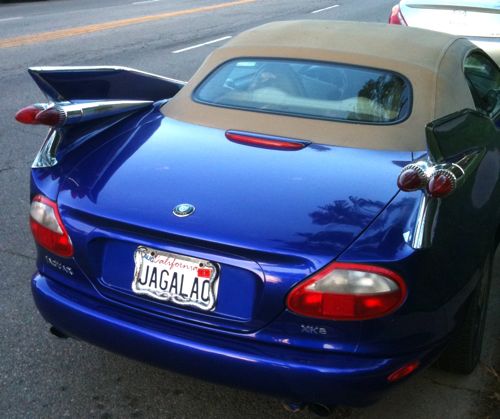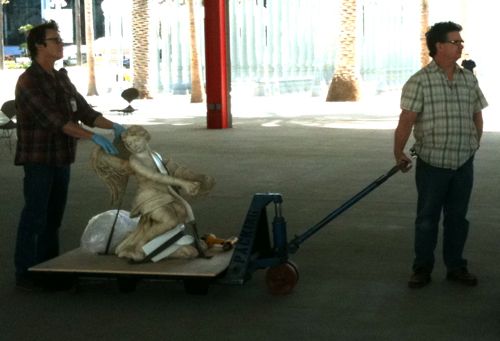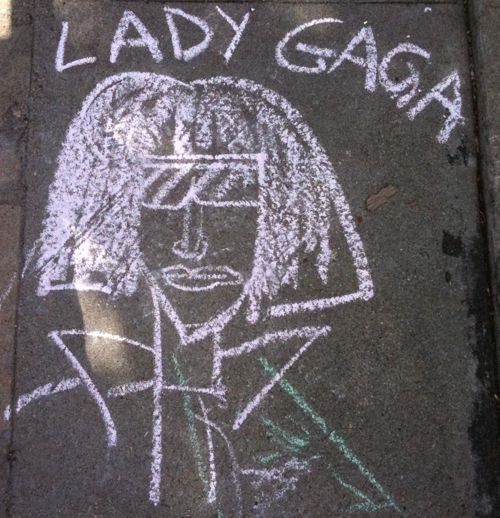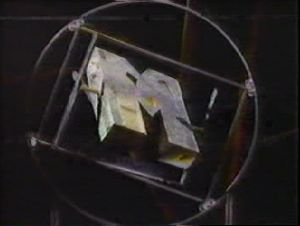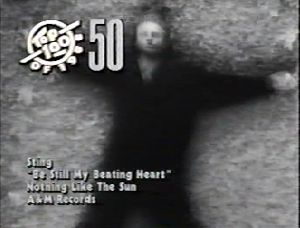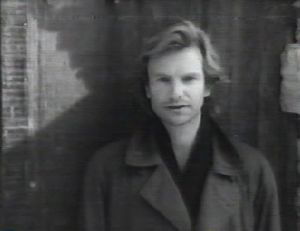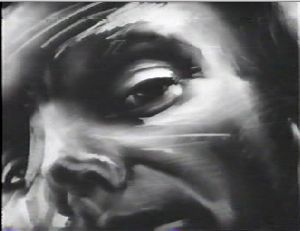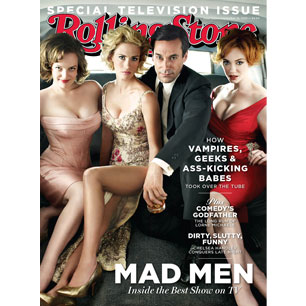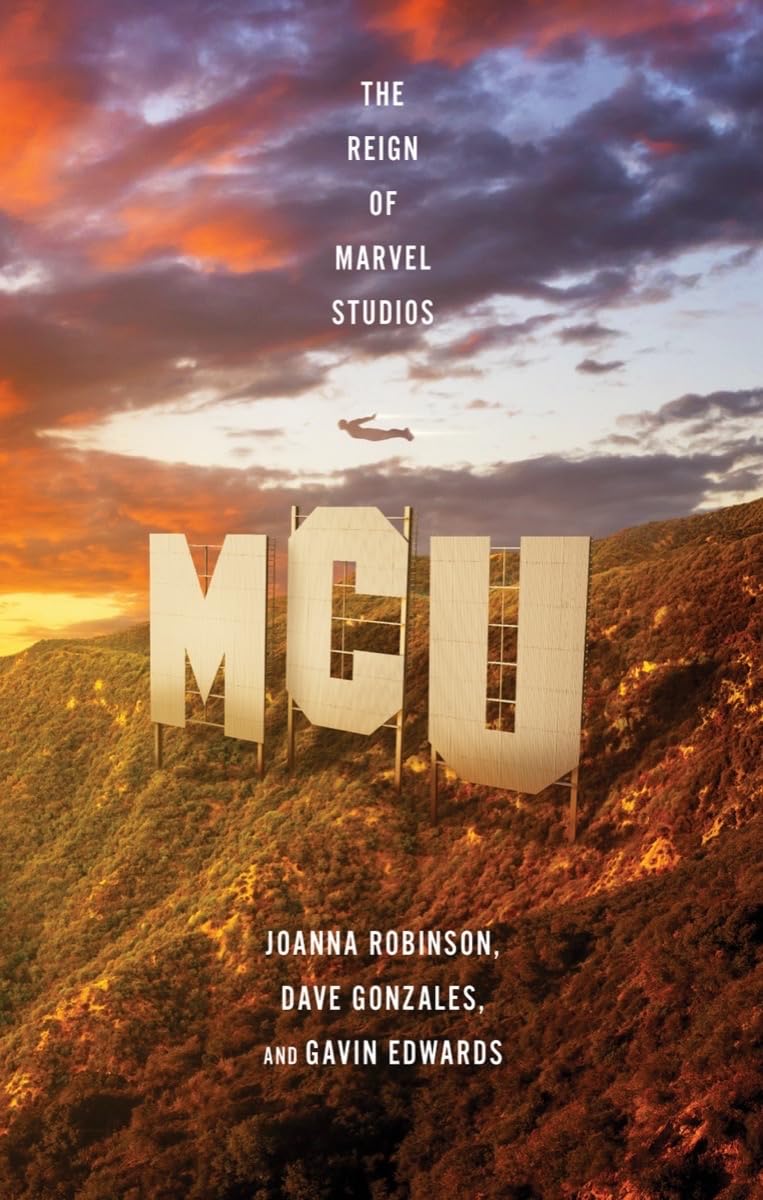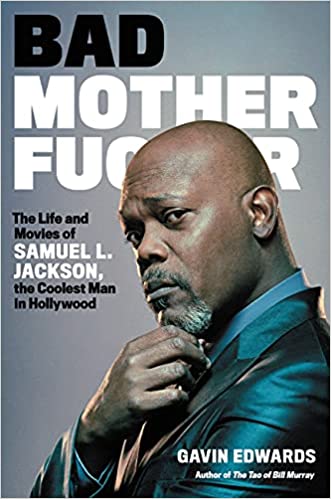1988 Countdown #49: Duran Duran, “I Don’t Want Your Love”
(New to the countdown? Catch up here.)
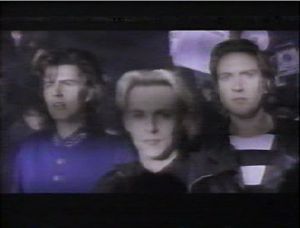 A white-haired judge sits down behind a podium and bangs his gavel, calling the video to order.
A white-haired judge sits down behind a podium and bangs his gavel, calling the video to order.
The footage flies by very quickly: this is the most hyperactive editing we’ve seen so far on the entire countdown. I’m not going to log the hundreds of different shots in this video, but breaking down the opening sequence after the judge (most of the following is in b&w, although clips sometimes snap into color halfway through): (1) two balding men in suits, dealing with some paperwork behind a rotary fan (2) a hand holding up a newspaper with the screaming headline “DURAN DURAN EXPOSÉ: COURTROOM SHOCK” (3) panning from an old-fashioned photographer’s flash to an angry old man pointing his wooden cane at the camera (4) two men in military uniforms (they look like Marines), one pudgy and white, one black and muttonchopped–the white one turns to the camera and begins to scream (5) the judge flailing about (6) one of the balding men in suits approaching a large ornamental eagle on the judge’s desk and pointing to the newspaper headline (7) the judge looking through a magnifying glass, distorting his right eye (8) the judge laughing, with the Marines standing behind him (9) the balding man at the eagle again, wagging his finger as a crowd gathers behind him (10) a femme fatale in a dark coat and cats-eye sunglasses, pulling her sleeve over her face (11) a bespectacled man, lit dramatically from below, reading something and looking up in shock (12) a white flash and the text “COURT ON FUNK” (13) a beautiful woman licking her lips (13) the judge leaning forward and removing his glasses (14) filmed from overhead, the judge’s desk, which includes his magnifying glass, and the block which he then bangs the gavel on, and finally (15) Simon Le Fucking Bon, who begins singing.
That all happens in ten seconds.
Watched in real time, you get a flurry of 1930s-style courtroom footage and the feeling of a great frenzy surrounding Duran Duran. The song is a serviceable but forgettable slice of pop-funk. Most people’s favorite period of Duran Duran is early, when the pretty young boys were hungry like wolves with cherry ice-cream smiles. I suppose that’s very nice, but I’ve always had a soft spot for what I think of as middle-period Duran singles, the ones with definite articles like “The Reflex” and “The Wild Boys.” Pop stardom compresses the human time scale: that middle period came in 1985, just one year after their American breakthrough. At any rate, while Duran Duran did well in extending their stay on the charts into the late ’80s (and beyond), I’ve never met anybody who would count this DD era as their favorite. But even when their music flagged, the band knew how to make videos.
More courtroom hysteria, anchored by periodic cuts to Simon Le Bon, who appears to be testifying by chanting, “I don’t mind / If you’re keeping someone else behind.” He is very still, which is effective in contrast to all the other on-screen movement. He lifts up his hands and wiggles his fingers jazz-hands style for just a moment. Le Bon’s lit from below, like he’s telling a ghost story at summer camp. At first he appears to be wearing a wig and robes, but it’s just dramatic lighting and a (presumably very expensive) jacket.
More footage, a mix of color and black-and-white, with some lyrics showing up as superimposed text: an audience of women watch raptly, clapping mechanically to the beat. John Taylor plays his bass guitar, which is helpfully labeled “BASS.” Somebody rolls off a bed. There’s another newspaper front page, with the headline “SIMON’S SECRET LADY.” A closer shot of the thirty-year-old Le Bon, with the camera spinning around him as he sings into a microphone with some television screens showing fuzzy blue images behind him. We also get close-up head shots of John Taylor and Nick Rhodes, the only members of the core DD five left in the band, Andy Taylor and Roger Taylor having wandered off after Live Aid in 1985. (Andy Taylor does appear elsewhere in this countdown, having produced Rod Stewart’s “Forever Young.”) John Taylor is sticking to a game plan of smoldering his way through the video.
“Take a chance / even if it’s only when we’re dancing in the light,” Le Bon sings, inverting a Springsteen lyric. We finally hit the chorus, which is catchy and a welcome release after Le Bon’s extended chanting. A horn section shows up, although it’s not clear whether they’ve come to testify in the courtroom. We get face-slapping, pointing, an anonymous drummer–and guitarist Warren Cuccurullo, who has enormous jet-black hair and looks as if he’s wandered in from a heavy metal video being shot down the hall. (According to Wikipedia, Cuccurullo didn’t play guitar on this song, although he contributed to other tracks on the Big Thing album.)
More shots of the band posing in front of TV screens; in 1988, that was the lazy director’s way of showing that a band was modern and self-aware and meta. (People were still having arguments about whether post-modernism should be abbreviated as “pomo” or “p-mod,” which I find charming in retrospect.) A beautiful black female singer enters the video, singing “I don’t want your love” in counterpoint with Le Bon.
Fans swarm Cuccurullo as he mimes a guitar solo in a smoky room. Well, I suppose it’s nice to make the new guy feel wanted.
Rhodes, Taylor, and Le Bon march into a crowded room, chanting, “I like noise / ’cause I like waking up the house.” Another headline: “DURAN STARS CLUB HORROR.”
As we head towards the outro, with Le Bon declaring repeatedly that he doesn’t want our love, we get an extended dance sequence. Director Steve Lowe turns up the cliché meter: the room has black-and-white tiles and is has light coming through the slats of large Venetian blinds. A woman with bobbed blonde hair slaps a man in a sleeveless maroon t-shirt, and then they spin each other around vigorously, falling to the ground and onto a bed. This is intercut with clips of beautiful women and a collection of jurors moving their tabloid newspapers in unison.
The video ends with the bright white of a flash photo. In four minutes, Duran Duran have successfully communicated that they are very famous and surrounded by beautiful women. Due to MTV standards and practices, the consumption of cocaine had to be implied by the hyperactive editing; if it could have been shown on screen, this might have been the ultimate Duran Duran video.
“I Don’t Want Your Love” hit #4 on the American singles chart. You can watch it here. If this only whets your appetite for Duranology, check out Rob Sheffield’s new book, Talking to Girls About Duran Duran.
posted 14 October 2010 in 1988. 5 comments

